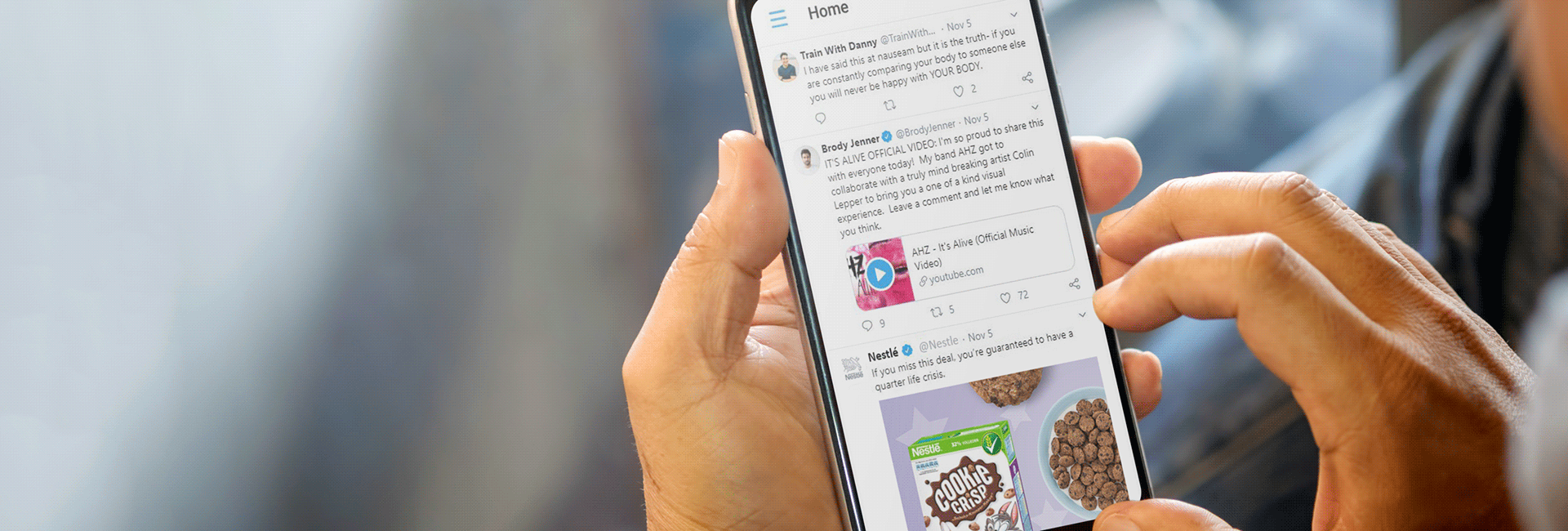With an unmissable presence in our day-to-day life – from showing off your cooking skills for your closest friends to companies digitally advertising their products – social media is an integral part of both personal and brand life. In celebration of World Social Media Day (June 30), we compiled our past blogs and case studies on social media advertising and picked out actionable tips for gaining digital expertise.
#1 From Zero to Hero: Understand behavioral social media ad testing

With people spending more and more time on social media platforms, and with marketers competing for the consumer’s attention, it’s crucial to understand how your ad will perform in a social media feed and how to modify it to make the most impact. Here are a few essential tips – make sure to check out the full study for all the insights:
- Differentiate your key performance indicators from the traditional media – understand and adapt to the digital space
- Aim for the top – ads positioned near the top of the feed have significantly higher visibility (94%)
- Test your ads on different devices and across different platforms for a broader scope of insights
#2 Test in-context for quality insights: Real vs. simulated feeds

Opting to keep the testing setting as natural as possible will provide the most authentic insights, but not just any context will do. Inserting tested ads in the personal feeds of your target respondents will yield the most accurate insights due to a realistic testing environment. However, people tend to be apprehensive about using their real accounts for research purposes. Rising to the challenge is a different method – implementing social media ads in a simulated feed – which yields very reliable data while allowing for more control over the study variables and the overall outcome. Learn more about the pros and cons of using contextual social media tests in our blog.
#3 What makes an excellent social media test?

Regardless of the potential social media holds for advertisers, many companies fail to optimize their ads for the feed. Here are some of the ad tests rules we believe come into play in the social media space – read more advice in our blog:
- Context, context, context! Test and measure your ads in a realistic digital environment for the most effective data
- The attention span of the consumer is very narrow (3-6s), so learn how to make every second of your material count
- Okay, you grabbed their attention – what now? If people don’t feel good about your product, the chances of them buying it aren’t high. Measure the emotional reaction to your tested material
- Use both implicit and explicit measures for optimal comprehension – the value of a combination of methods in bigger than their sum
- Testing in real or simulated social media feeds – Not all environments are made equal, so pick the right testing environment for your brand’s needs
#4 Twitter introduces 6s ad bidding following EyeSee study

EyeSee’s study for Twitter found that 6 seconds is enough for a highly efficient, attention-grabbing ad! Short (under 6 seconds) branded ad videos with no sound engaged more viewers and generated better ad recall and message association when compared to linear TVC ad videos. Have a look at what led to Twitter announcing their 6-second bid video unit to worldwide advertisers.
#5 Breaking the social media clutter: Do some industries have it harder?

Standing out in the sea of content isn’t always smooth sailing. Our advertising study compared six different industries (Food, Beverage, Cosmetics, Banking & Telco, Travel services, and Technology) in order to understand the reach of each one in the digital world. Food & Beverage ads tend to grab the most attention so if you work in the food industry keep it straightforward, short, and simple. While ads focused on Banking, Telco and Travel Services don’t have the same luxury, putting the brand or logo in the thumbnail of the video, as well as making it highly visible through-out the ad will raise visibility and ad recall.
#6 Social media insights: Replicating behavioral data during crisis

Intending to understand how stable behavioral indicators are, EyeSee replicated a cross-industry advertising study and compared the respondent’s answers from last year to their responses during the crisis. We’ve found that the best performing ads in each industry stayed the same, with some even improving their position – meaning behavioral methods are still reliable. Moreover, there were no significant changes in the different KPIs either in comparison to the first study, aside from Ad recall. Ads were recalled with greater success in the 2nd wave, probably due to the more people staying home and spending time connecting over social media during periods of social distancing. Read more about the study in our blog, or hear the insights in our webinar.
Interested in social media testing? Reach out to us for more details at [email protected]
